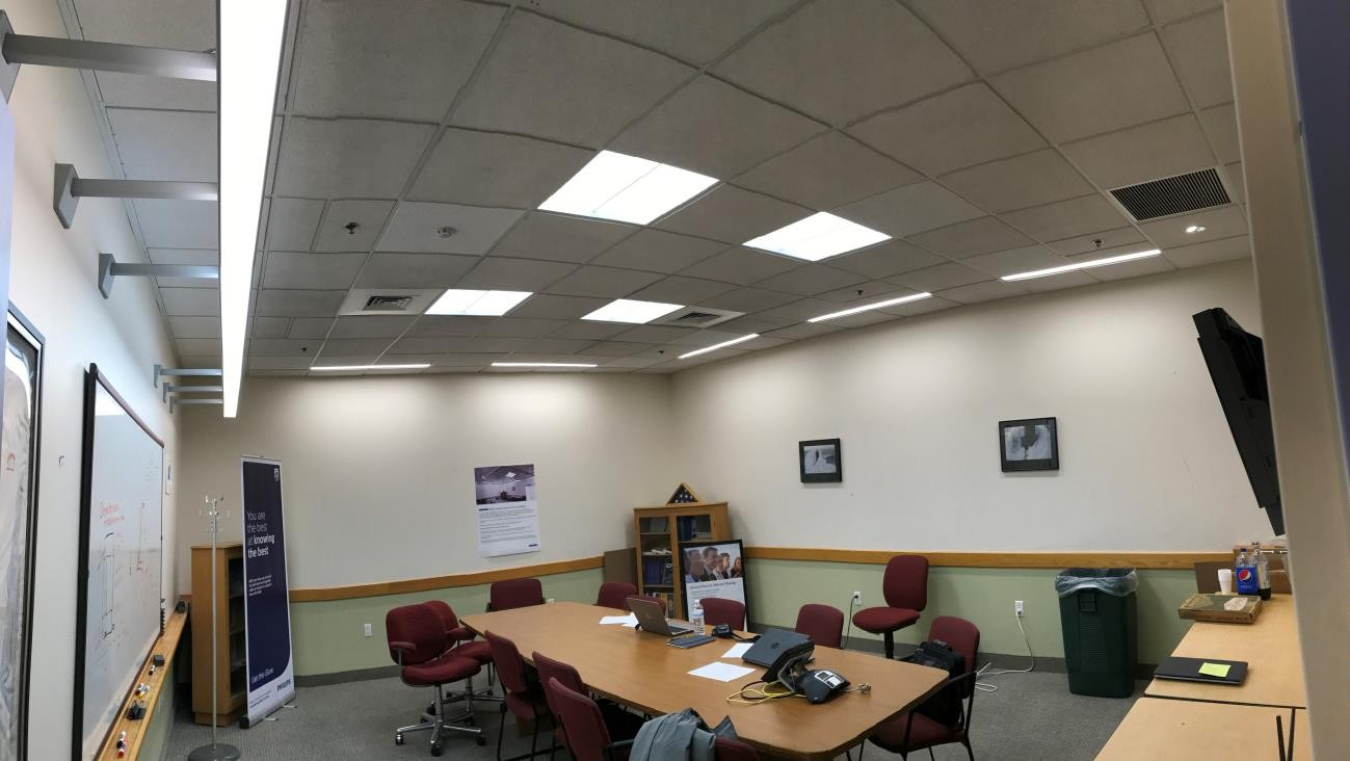
Conference room with the new system installed.
With the help of DOE funding, Philips Lighting has developed an innovative LED office lighting system that yields up to 70% energy savings over incumbent fluorescent technologies, and is capable of variable modulation of intensity, distribution, and spectrum in order to support the diverse visual and non-visual needs of the occupants.
A major goal of the project was to increase the amount of circadian-impactful illumination during the day, in order to reduce the impact of the deficit many indoor workers experience. The new system features ambient illumination from a reduced-lumen-output, low-glare general-illumination tunable-white (2700-5000K) luminaire on the ceiling. Adjacent vertical plane illumination responds to the same schedule-based automatic behaviors as the ceiling-level ambient luminaires. By targeting higher vertical illuminance, the energy-effective delivery of light for non-visual needs – including circadian impact, which is measured on the vertical plane – is optimized, and balanced brightness is maintained in the space. The application efficacy of task-level luminaires (2700-6500K) is utilized to deliver the horizontal task-plane illumination and the majority of the circadian-impactful lighting. The task-level luminaires feature personalized control of the intensity and color temperature.
In meeting rooms and teaming areas, selectable presets modulate the distribution of light as well as the intensity and color temperature. These selectable preset scenes are designed to meet the needs of the specific visual tasks and address the interrelated response of the visual and non-visual systems to produce the acute (short-term) non-circadian effects that are designed to impact such things as alertness and mood. Because of the variable use of the spaces in the teaming and meeting rooms, the energy savings there is 56%, compared to energy savings of 70% in the open office space.
This project illustrates how taking a system-wide approach to solve an application problem resulted in a wide range of benefits for those who use the space. In addition to tackling key technological issues and keeping cost and complexity at the minimum, the project also aims to achieve rapid commercialization, which will foster job creation in the U.S. (September 2017)
Return to Research Highlights.

